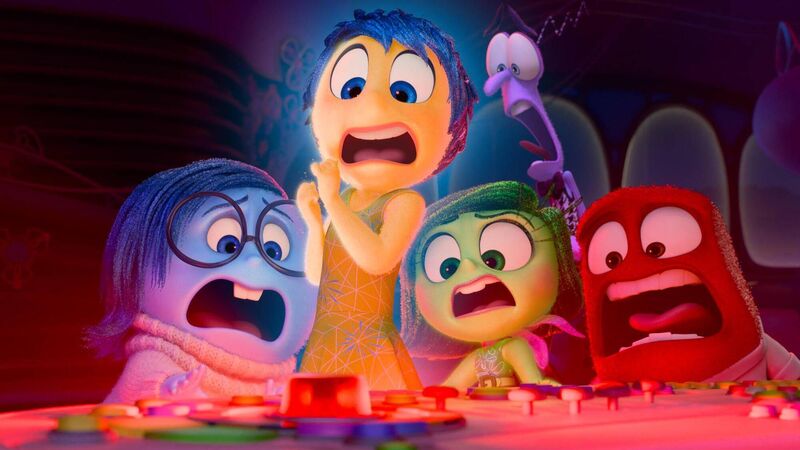WHEN I watched the first Inside Out movie in 2015, I came away believing I had witnessed something exceptional. The plot line was unique and insightful, and I was intrigued by its impact on young viewers.
The movie deals with the complex theme of childhood emotions in a relatable and exciting way by creating characters to represent each emotion, such as joy, sadness, fear, anger, and disgust.
One of the significant challenges of working therapeutically with younger children is discussing emotions in a language they can understand. Many children are ‘visual’ learners at that age, so the Inside Out characters are an excellent template to help them discuss their feelings.
How we name and understand emotions plays a pivotal role in learning to manage and respond to them. What one child understands by the words ‘sad’ or ‘worried’ may vary considerably from another child’s understanding, so clarifying language is a core principle of therapeutic work.
Most psychological therapies aim to do the same: put words on feelings to promote awareness and provide helpful responses to emotional challenges.
Mixed emotions
One of the movie’s core plot lines was the concept that two opposing emotions can coexist at one time. Viewers are told they need to experience an emotion like sadness to appreciate other emotions, such as joy. Young children tend to have a rigid understanding of the world, so getting their heads around the fact that they can simultaneously feel excited and anxious or happy and sad can be challenging.
When news broke late last year that a sequel to Inside Out was in the works, I was excited and curious about what the creators had in store. I was confident they would do an excellent job because the Pixar creative team behind the movie consults the science and employs experts like Berkley neuroscientist Dr Dacher Keltner and renowned clinical psychologist Lisa Damour.
The movie’s central character, Riley, is now 13, so her emotional world is rapidly changing.
Joy gathers and uses Riley’s positive experiences to develop her core beliefs and sense of self. Interestingly, Joy is only keen on using positive emotions to inform Riley’s sense of self and moves all negative emotions to the back of her mind.
The experiences that informed her early sense of self were when ‘Mom and Dad are proud of me’ and ‘I’m a good person’— far more emotionally sustaining than the teenage self-belief that is contingent on accomplishments in sports or academics.
In one funny scene, the command centre for Riley’s emotions experiences an event akin to an earthquake and a wrecking ball strikes. When the characters go to investigate, they realise that the onset of puberty has caused the event.
Puberty reconfigures her whole emotional system, and we are introduced to new emotional characters: Anxiety, Embarrassment, Envy and Ennui (a feeling of weariness or dissatisfaction), which Damour says captures the natural disdain and over-it-ness teenagers can have. But, of all the new emotions, Anxiety seems to be the one in charge.
I was interested to see how the movie’s creators distinguished the characters Fear in the first movie from Anxiety in the second. We are told that Fear protects Riley from what she can see, and Anxiety protects her from what she cannot see.
Riley experiences an overreaction to feelings in her life. She begins to feel paranoid and unsure about her friendships and is becoming increasingly concerned about how others see her. Anxiety quickly takes over and seems obsessed with Riley becoming accepted by others.
When Riley finds out that her two closest friends are going to a different high school than her, her world is turned upside down. We watch as she attempts to maintain loyalties between her old and new friends as they attend an ice hockey camp over the summer and build a new sense of self. She starts to equate success with acceptance. Her beliefs move from I am a good person, and my parents love me, to ‘If I make the ice hockey team, I won’t be alone’.
Anxiety takes control of her choices. The old emotions are transported to the back of Riley’s mind, and the movie follows their journey as they attempt to get back to headquarters.
When Anxiety oversees Riley’s choices, everything is about fitting in and performing. At one point in the film, Anxiety says, “As long as Riley likes what they [her friends] like, all will be OK.” This statement accurately captures the thinking system of younger teens, where peer acceptance is all that matters.
As the story unfolds, the viewer is shown how Anxiety uses Riley’s imagination against her. Rather than imagining positive outcomes, Anxiety is hell-bent on portraying a ‘worst-case scenario,’ which shapes her choices. The net result is that her belief system and sense of self changes from ‘I’m a good person’ to ‘I’m not good enough’.
Desire to be accepted
Many young people strive to fit in instead of belonging. Belonging means being in an environment where you can be yourself and not need to mask or perform to feel accepted. Fitting in involves shaping your thinking and behaviour so as not to stand out and be accepted.
The movie teaches us that Anxiety and Joy don’t get to choose who Riley is. Riley will have a mix of good and bad experiences and, therefore, will experience good and bad emotions, which is OK.
The belief that when we turn 18, we stop developing is naïve and inaccurate. Even in my forties, I am still trying to find out who I am, but knowing that my identity is not black and white but a grey mix of good and bad can only come with time. It offers a degree of peace of mind and acceptance.
We can all be kind and selfish, happy and sad, anxious and confident. These contrasting emotions make us human. Accepting that each of us is a dynamic mix of contrasting emotions could profoundly affect a child’s life. Going to see this movie with your child could act as a thought-provoking experience and provide a talking point for a conversation about the inner experiences of growing up.
In a recent interview with US news website Vox, Keltner said: “The central mission of the Inside Outmovies is to portray how the world needs to understand that sadness is OK. Sadness has this wisdom to it. The film tells families we need all the emotions. Embarrassment feels uncomfortable, but it tells your mind I don’t want to make that mistake again. I will learn. So central to these films is the idea that the emotions are healthy, and there’s new research showing if you have a rich, complex life of emotion and you feel them all in the right way, that’s the best place to be”.
The onset of adolescence brings with it a degree of control over who we are, allowing us to make choices about who we want to be. However, the process of self-definition is rife with challenges and opinions of others, and Riley’s inner journey reminds us of how turbulent a voyage of discovery can be.
- Dr Colman Noctor is a child psychotherapist
CONNECT WITH US TODAY
Be the first to know the latest news and updates










